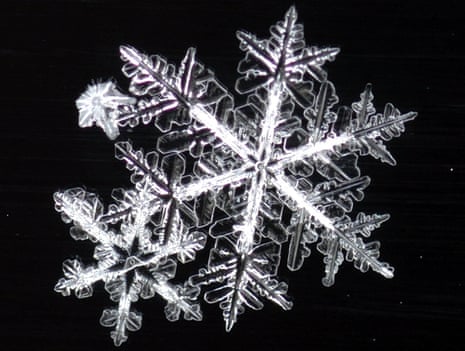About 85% of precipitation in the UK started life as an ice crystal or snowflake. Most turn to rain as they fall (the UK has an average of just 23.7 days of snow or sleet each year) and many prefer to drift around, creating overcast days. Predicting when a cloud will dump its load is hard, but new experiments are showing that snowflake geometry plays an important role.
Hefty snowflakes fall quickly through the air, whilst delicate ice crystals tend to take their time. Understanding the aerodynamics of how ice crystals fall is an important part of climate modelling, because some ice crystals help clouds hang around for longer, reflecting more sunlight back into space. But snowflakes and ice crystals are difficult to study: they are small, they come in lots of shapes and sizes, and they tend to break or melt when you touch them.
Mark McCorquodale and his colleagues at the University of Reading have overcome this problem by 3D printing a batch of snowflakes of varying shapes and creating snowstorms in the lab. So far they have found that the more open snowflake shapes fall much more slowly than we thought. Now they are investigating how different flakes tumble as they fall.

Comments (…)
Sign in or create your Guardian account to join the discussion